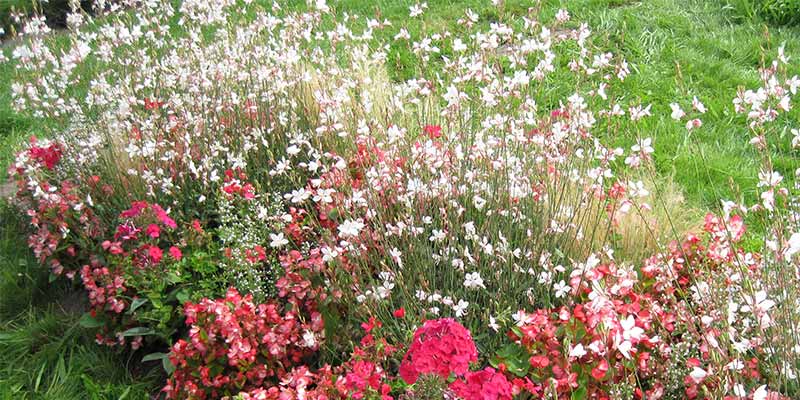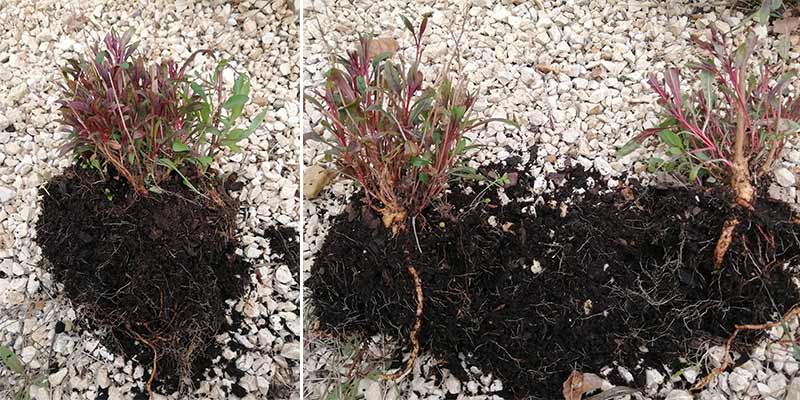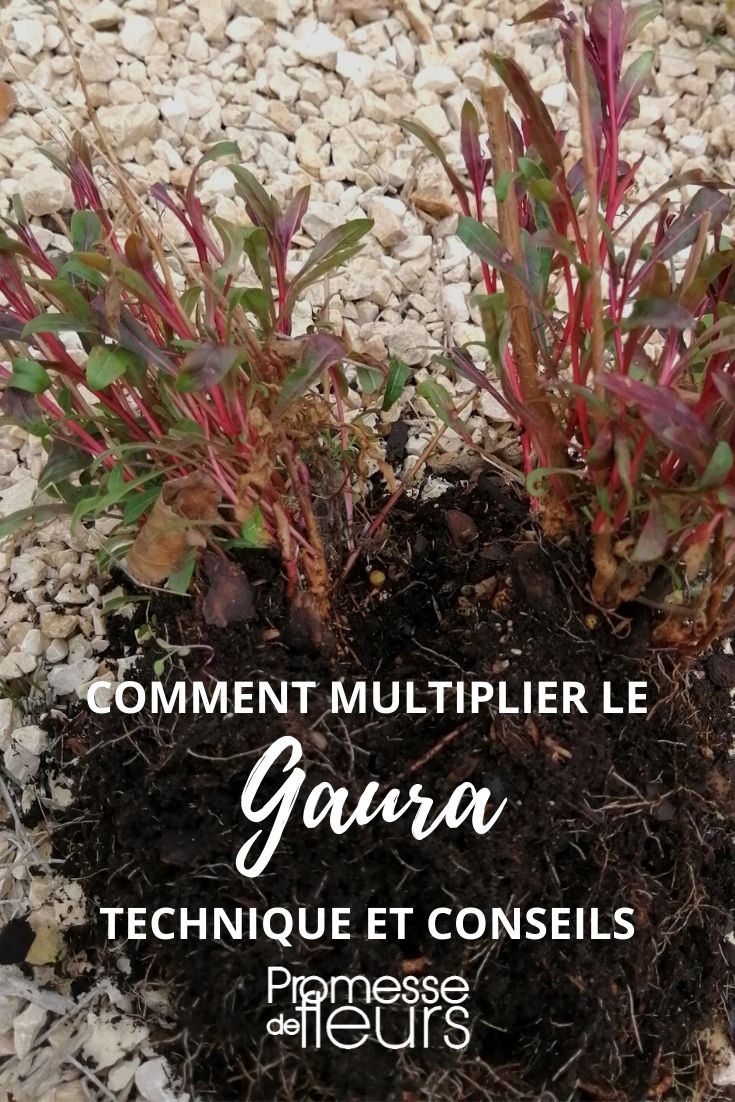The Gaura lindheimeri is an easy-going perennial plant, particularly cherished by gardeners. How could one not appreciate and succumb to its delicate little flowers that come in white and pink shades, brightening gardens from March to October? Gaura also has the advantage of thriving equally well in flower beds or containers. It adds lightness and volume to floral arrangements. Try propagating it to enhance your green space further. How to propagate Gaura?

Gaura pairs perfectly with summer flower beds. © S.Chaillot
With this tutorial, discover the different methods of propagating Gauras, when and how to proceed.
How to propagate Gaura by sowing?
When to sow Gaura?
Gaura seeds are typically sown in spring, from March or April until June, either directly in their final position or in buckets for later transplanting. For impatient gardeners eager to see Gauras bloom, it's possible to sow them under cover from February to April and then move them outside after the last frosts.
Required materials
- a packet of Gaura seeds
- one or more buckets
- compost
- a watering can
- a rake
- a spade
Steps for sowing Gaura
- Work the soil with a spade to loosen it, breaking up clumps and removing any stones;
- Level the soil surface with a rake;
- For pot sowing, choose a fine seed compost;
- Place a few seeds on the surface;
- Cover with 1 cm of soil or compost;
- Firm the soil surface with your hand or a board;
- Water the young seedlings with a watering can fitted with a rose for gentle watering;
- Whether in the ground or in buckets, keep the soil moist;
- Store the buckets in a room with a temperature between 20 and 24°C.
Once the young plants in buckets reach 10 to 15 cm in height, transplant them.
You can then enjoy a modest first flowering in the sowing year, followed by abundant blooms in subsequent years.
Stéphanie's tips: If you leave some faded flowers in place at the end of the season, you may achieve spontaneous sowing and be lucky enough to see little white Gaura seedlings emerge. This doesn't work with pink Gauras as they are sterile. Finally, harvest the seeds in October-November and dry them before storing, ready for your own sowings.
How to propagate Gaura by division?
When to divide Gaura?
Once well established, this perennial Gaura can, over the years, develop a dense clump with dwindling flowering. After 3 to 4 years, spring is the ideal time to divide the clump. Note that its taproot makes division tricky. Propagation by cuttings is much easier than division, which is more delicate. Also, only division and cuttings preserve the pink colour of the parent plant. If you divide a Gaura, do so in spring, the best season for propagation.

Dividing a parent plant into 2 parts © S.Dionet
Required materials
- a knife
- a garden fork
- a watering can
- mulch
Steps for dividing Gaura
- Water the plant thoroughly to facilitate division;
- Lift the entire stump;
- With the garden fork or a knife, cut the stump into two parts, taking care with the root system;
- Transplant the two sections either in the ground or in pots;
- Firm the soil surface, water generously, then mulch with straw, flax chaff, wood chips or a layer of dead leaves.
How to propagate Gaura by cuttings?
When to take Gaura cuttings?
Taking cuttings from Gaura can begin in early March, before flowering, and at the end of summer, after flowering. This is the simplest method, suitable for all gardeners, which preserves the flower colour of the parent plant and allows you to quickly enjoy Gauras flowering, dancing like a cloud of butterflies.
Required materials
- secateurs
- a bucket or pot
- plant hormone for cuttings
- a pencil
- a spray bottle
Steps for taking Gaura cuttings
- Start with a healthy plant, free from disease;
- Fill a bucket with special cutting compost placed on a layer of gravel or sand at the bottom;
- Moisten the compost;
- Select cuttings from a non-flowering plant;
- With secateurs, cut just above a node, a stem about 10 cm long;
- Remove 2 to 3 leaves from the bottom to prepare the cutting;
- Dip the end of the stem lightly, about ½ cm, in plant hormone for cuttings;
- Insert the cutting into a hole made beforehand with a pencil, hormone side down, into the bucket of compost;
- Firm the soil well around the cutting for perfect contact;
Water gently so the soil adheres well to the cutting.
Place the cuttings in a room at 20°C and keep the soil moist. You can use the 'bagging' method, covering the bucket or pot with clear film or a glass cloche, ventilating regularly. This technique speeds up rooting. After 3 weeks to a month, the root system will be well developed, and the cutting can be repotted into a larger pot if needed.
To go further
Whether white Gaura or pink Gaura, discover our advice sheet: Gaura lindheimeri: when, where and how to plant it?



































Comments